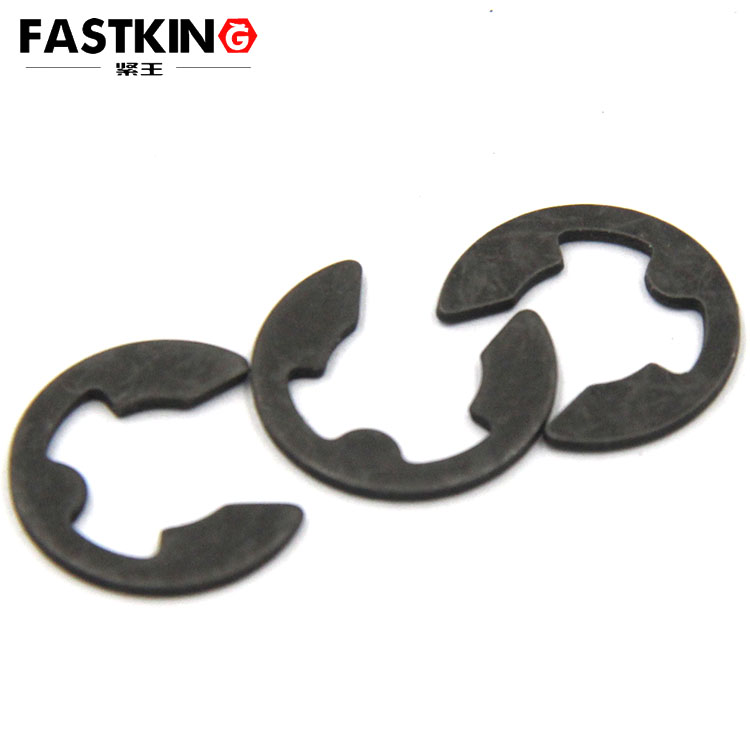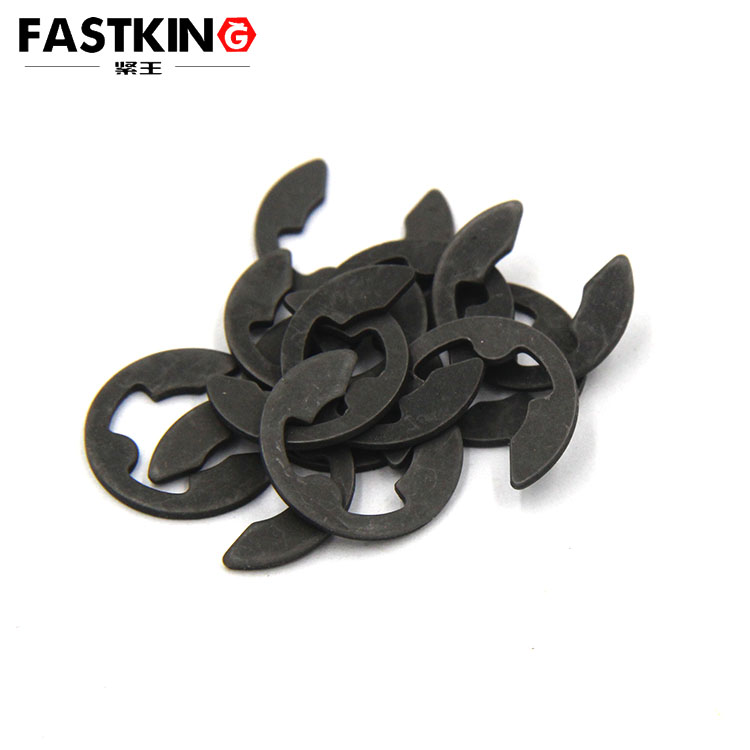Working Principle of E-Type Retaining Rings
E-type retaining rings are manufactured from high-quality spring steel, undergoing precision machining and heat treatment to achieve excellent elastic properties. Their working principle is based on elastic deformation: when the ring is installed into the shaft groove, the open ends deform elastically, allowing the ring to fit snugly into the groove, creating a reliable axial fixation.
This design cleverly utilizes the material's elastic characteristics, ensuring both ease of installation and secure fixation. The open design allows the ring to be easily snapped into the shaft groove, while the material's elasticity provides continuous radial pressure, preventing axial movement of components.

In mechanical structures, E-type retaining rings primarily serve axial positioning and limiting functions. They effectively prevent axial displacement of bearings, gears, and other components on the shaft, ensuring stable and reliable mechanical operation.
Proper Usage of E-Type Retaining Rings
Installing E-type retaining rings requires a special tool—retaining ring pliers. Before installation, check that the shaft groove dimensions meet requirements, ensuring the ring can fully embed. During installation, use the pliers to grip the ring ends, spread them slightly larger than the shaft diameter, and then slowly push them into the groove.
Removal also requires retaining ring pliers, carefully extracting the ring from the shaft groove. Control the force during operation to avoid the ring popping out and causing injury. Regularly inspect the ring's fixation state and promptly replace any deformed or damaged rings.
Usage precautions include: selecting the appropriate size and model to ensure compatibility with the shaft groove; avoiding over-spreading that could cause permanent deformation; using stainless steel material in corrosive environments; and conducting regular maintenance checks to replace aging rings promptly.
Typical Application Scenarios of E-Type Retaining Rings
In the automotive manufacturing sector, E-type retaining rings are widely used in critical areas such as transmissions and engines. They secure rotating components like bearings and gears, ensuring reliable power transmission. In transmissions, multiple rings work in concert to ensure precise positioning of gear sets.
In mechanical equipment, E-type retaining rings are standard for bearing fixation. They can withstand axial loads, preventing bearing displacement during operation. In pump equipment, the rings also secure impellers, ensuring proper operation of fluid machinery.

In household appliances, from washing machines to air conditioners, E-type retaining rings are ubiquitous. They secure components on motor shafts, ensuring long-term stable operation of appliances. In power tools, the rings fix gear sets, ensuring reliable power output.
Though small, E-type retaining rings play an irreplaceable role in modern industry. Proper use and maintenance of these components can significantly enhance equipment reliability and service life. With advancements in manufacturing technology, E-type retaining rings will continue to demonstrate their value in more fields, providing reliable support for the stable operation of mechanical equipment.
